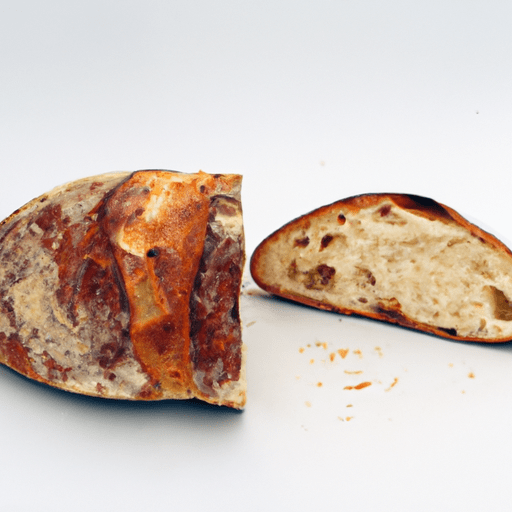The Irresistible Italian Loaf: A Culinary Delight
If there’s one bread that has captivated the world with its delicious taste and versatility, it’s the Italian loaf. With its crusty exterior and soft, airy interior, this bread is an essential part of Italian cuisine. In this blog post, we will dive deep into the mouthwatering world of the Italian loaf, exploring its taste, common uses in cooking, nutritional value, and some interesting historical tidbits.
Taste: Crispy, Chewy, and Delightfully Flavorful
The Italian loaf’s distinctive taste is a result of a few key factors. Firstly, its crust is golden brown and crispy, providing a satisfying crunch with every bite. Beneath the crust lies a chewy and somewhat dense interior that’s soft and airy, making it perfect for sopping up sauces or creating delightful sandwiches.
The flavor profile of the Italian loaf is subtle, yet slightly tangy. This is due to the fermentation process, where the yeast creates the perfect balance between sweetness and acidity. The aroma that fills the air when baking the loaf is truly irresistible and enough to make anyone’s mouth water.
Common Uses: From Bruschetta to Paninis
The Italian loaf’s versatility is what truly sets it apart. From simple toast to extravagant sandwiches, there’s a wide range of delicious uses for this amazing bread.
One popular Italian dish featuring the loaf is bruschetta. By grilling or toasting slices of the bread and topping it with fresh tomatoes, basil, garlic, and olive oil, you create a simple and flavorful appetizer that’s always a crowd-pleaser.
The Italian loaf is also the bread of choice for crafting the perfect panini. Layer thinly sliced meats, cheeses, veggies, and spreads between slices of the loaf, then press it to perfection, creating a warm, crispy, and oozing-with-flavor meal.
Nutritional Value: The Goodness Within
While the Italian loaf is undeniably delicious, it’s important to consider its nutritional value. As an enriched bread, it provides a good amount of carbohydrates, essential for energy. It also contains some protein and a variety of minerals, including iron and magnesium.
However, it’s worth noting that the Italian loaf is calorie-dense and should be enjoyed in moderation, especially if you are watching your weight or have dietary restrictions. Pair it with fresh vegetables, lean proteins, or a vibrant salad to create a well-balanced meal.
History and Fun Facts: A Time-Tested Tradition
The Italian loaf’s origins can be traced back to ancient times. Over the centuries, the art of bread-making has evolved, with each generation perfecting the techniques to create such a remarkable staple.
Interestingly, the truly authentic Italian loaf is made with only four simple ingredients: flour, water, yeast, and salt. These humble ingredients, when combined with skill and time, produce a masterpiece.
In Italy, bread is held in high regard and not to be wasted. It’s considered bad luck to throw away bread, and various uses have been developed to utilize stale loaves. Ever heard of Panzanella or ribollita? These are traditional Tuscan dishes that recycle old bread, transforming it into mouthwatering meals.
Conclusion
The Italian loaf is a culinary delight that has captivated taste buds around the world. Its crispy texture, chewy interior, and subtle tangy flavor make it perfect for various dishes. Whether you’re enjoying bruschetta, crafting a panini, or using it as a base for a warm bowl of soup, the Italian loaf is a versatile bread that never disappoints. So next time you’re at the bakery, don’t forget to pick up a loaf and experience the magic of this Italian delicacy!
Italian Loaf
Origin: The Italian loaf, also known as Italian bread or Pane Italiano in Italian, is a traditional type of bread originating from Italy. It has been a staple in Italian cuisine for centuries and is now enjoyed worldwide.
Common uses: Italian loaf is versatile and commonly used in various dishes. It is often eaten as a standalone bread, either plain or with a spread or dip. It is also used to make sandwiches, bruschetta, crostini, and paninis. Italian loaf is popularly used in favor of the classic baguette for making garlic bread and for dipping in soups or sauces.
Nutritional benefits: Italian loaf is typically made from simple ingredients such as wheat flour, water, yeast, salt, and sometimes olive oil. While the specific nutritional profile may vary depending on the bread recipe and brand, Italian loaf generally provides dietary fiber, carbohydrates, and a moderate amount of protein. It’s generally low in fat and cholesterol-free, making it a healthier choice compared to some other bread types.
Unique properties: Italian loaf has a firm, chewy crust and a soft, airy crumb. It is known for its slightly sour flavor and distinct aroma. The crust gets its desired characteristics due to the “double bake” process, where the bread is first baked with steam to create a crisp crust and then baked without steam to develop a deep brown color. Different regions in Italy have their own variations of Italian loaf, varying in shape, size, and crust thickness.
Historical significance: Bread has always played an essential role in Italian culture and cuisine. Traditional Italian bread-making techniques date back centuries, and regional specialty loaves have become symbolically important. The Italian loaf has been a staple food in Italian households and is deeply rooted in the country’s culinary traditions. Its historical significance can be seen in the timeless ritual of breaking bread with family and friends during meals.




Use the share button below if you liked it.
It makes me smile, when I see it.